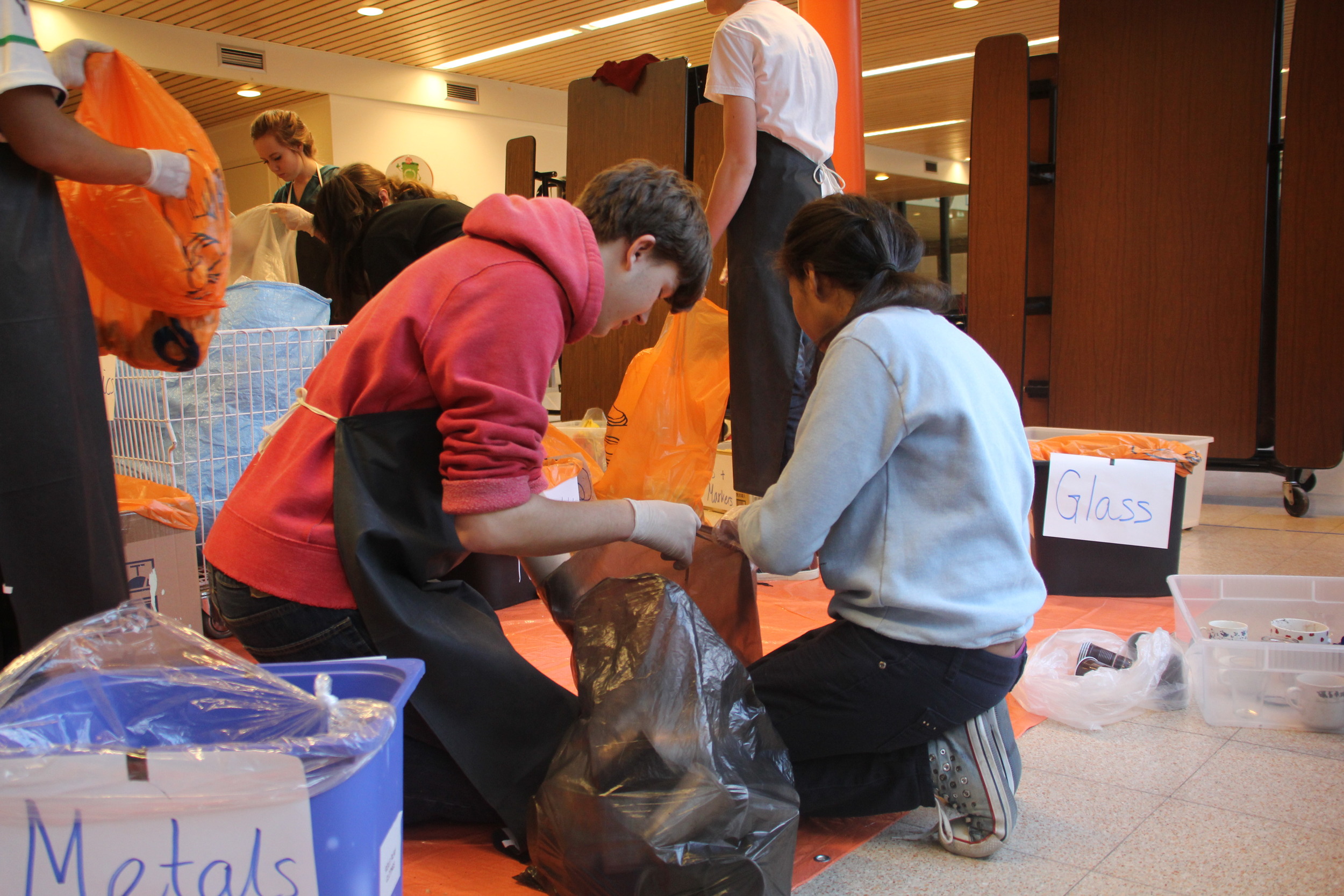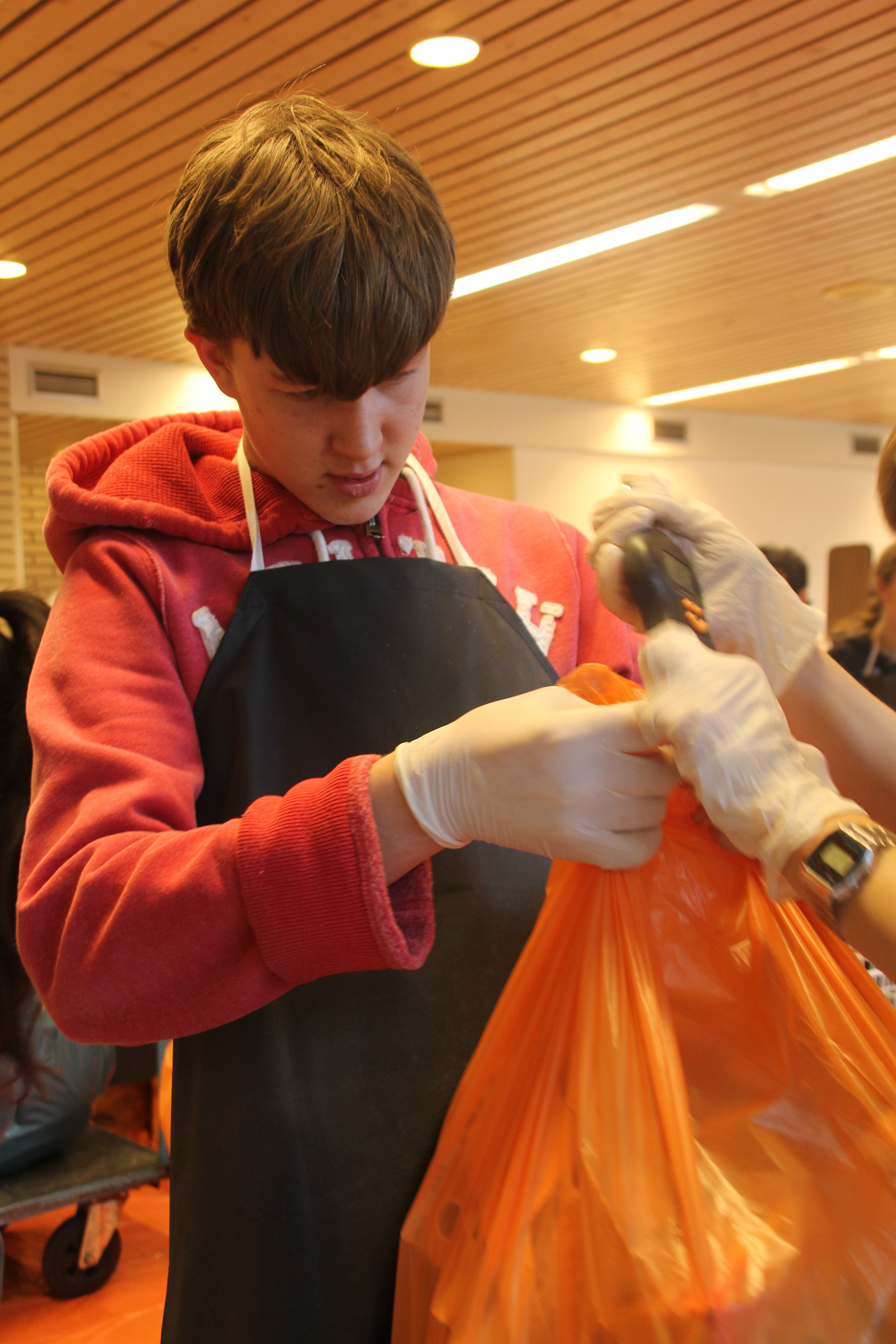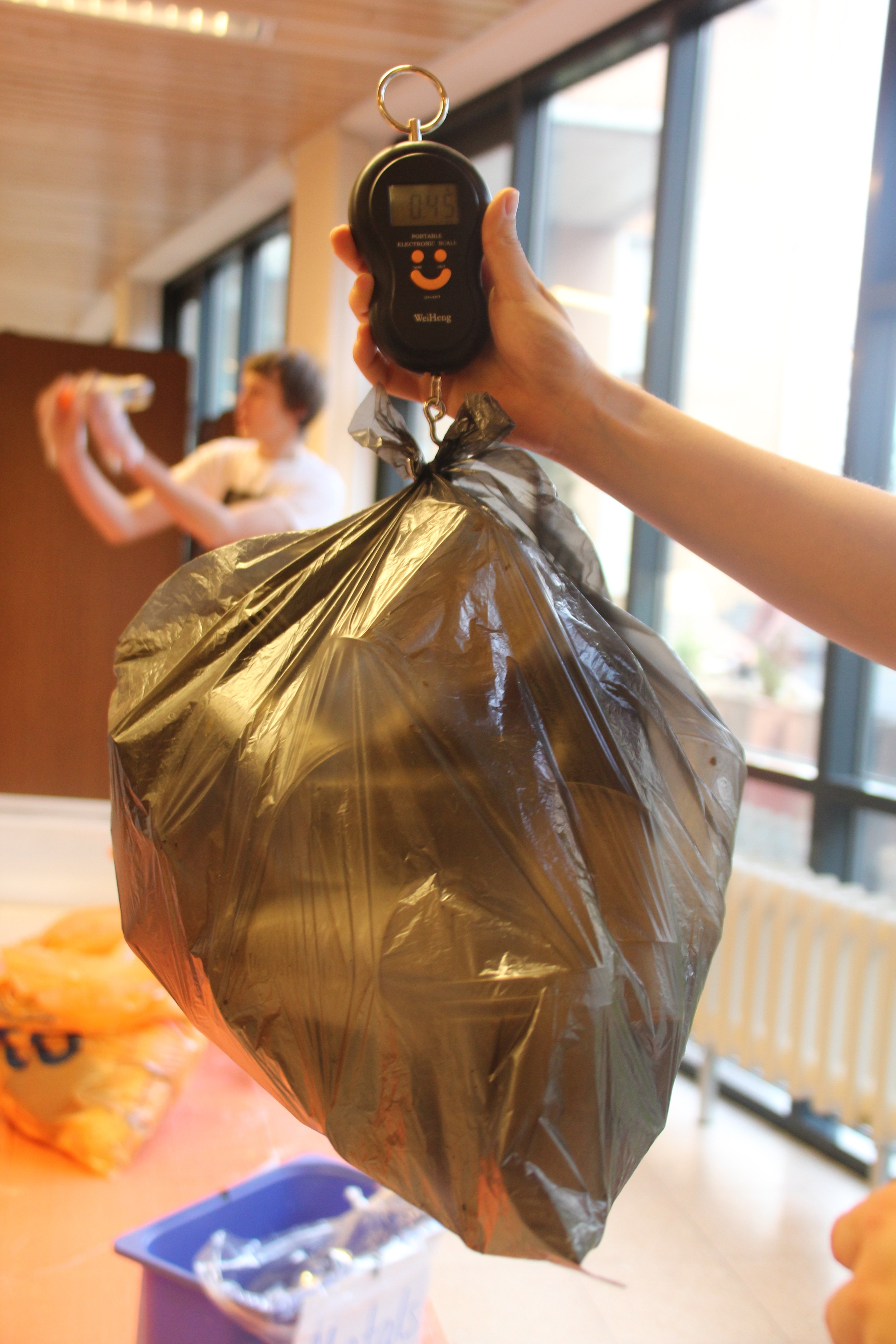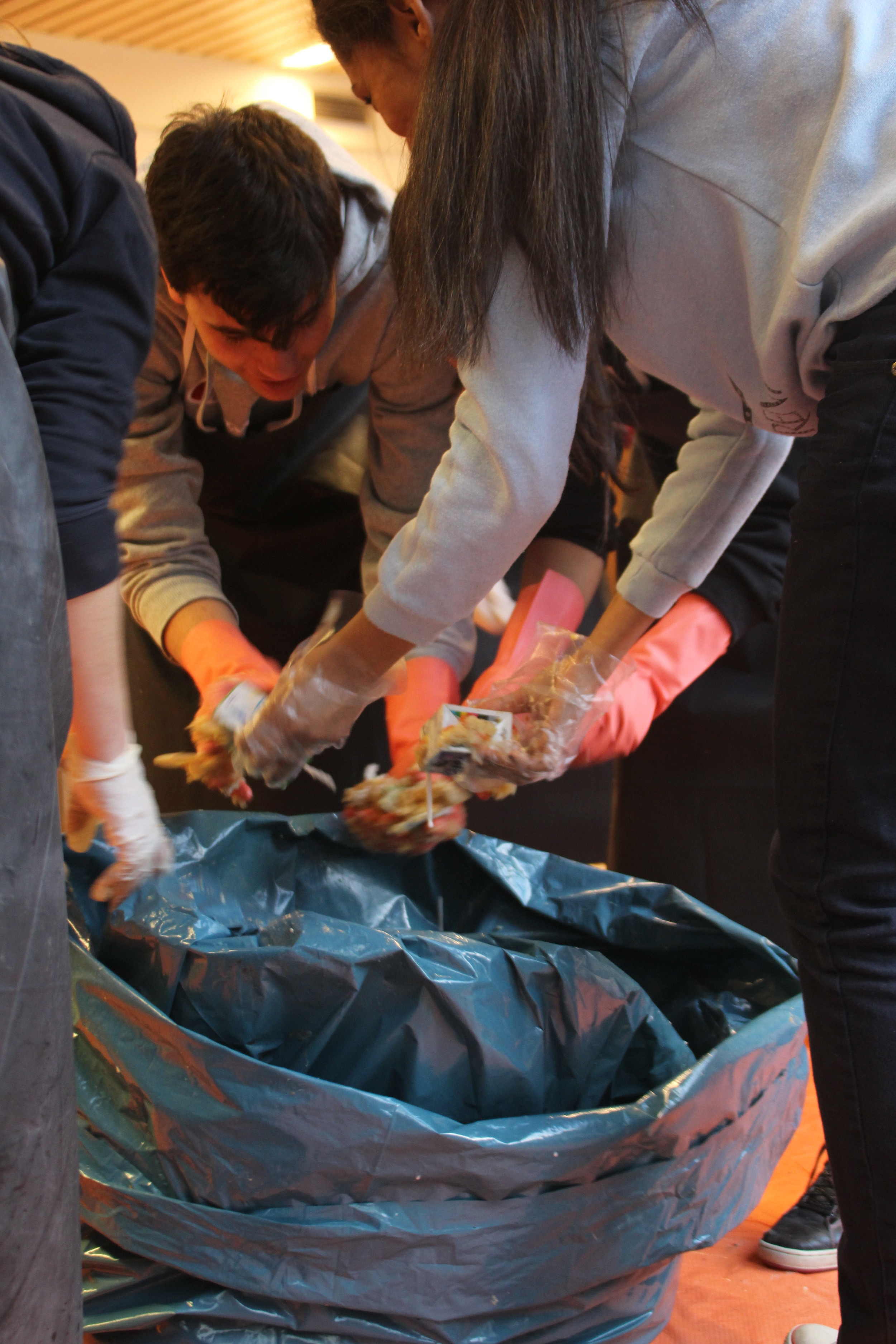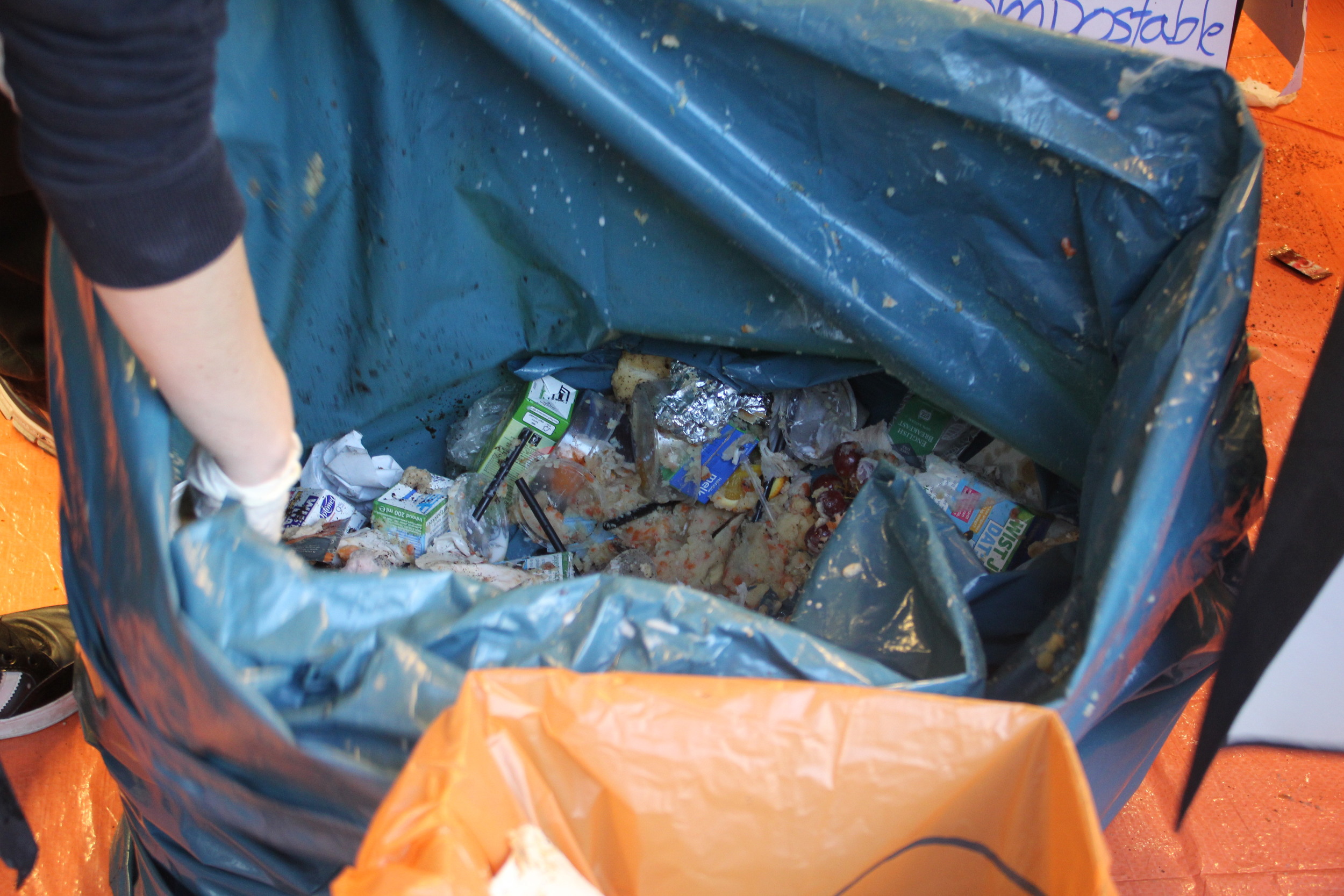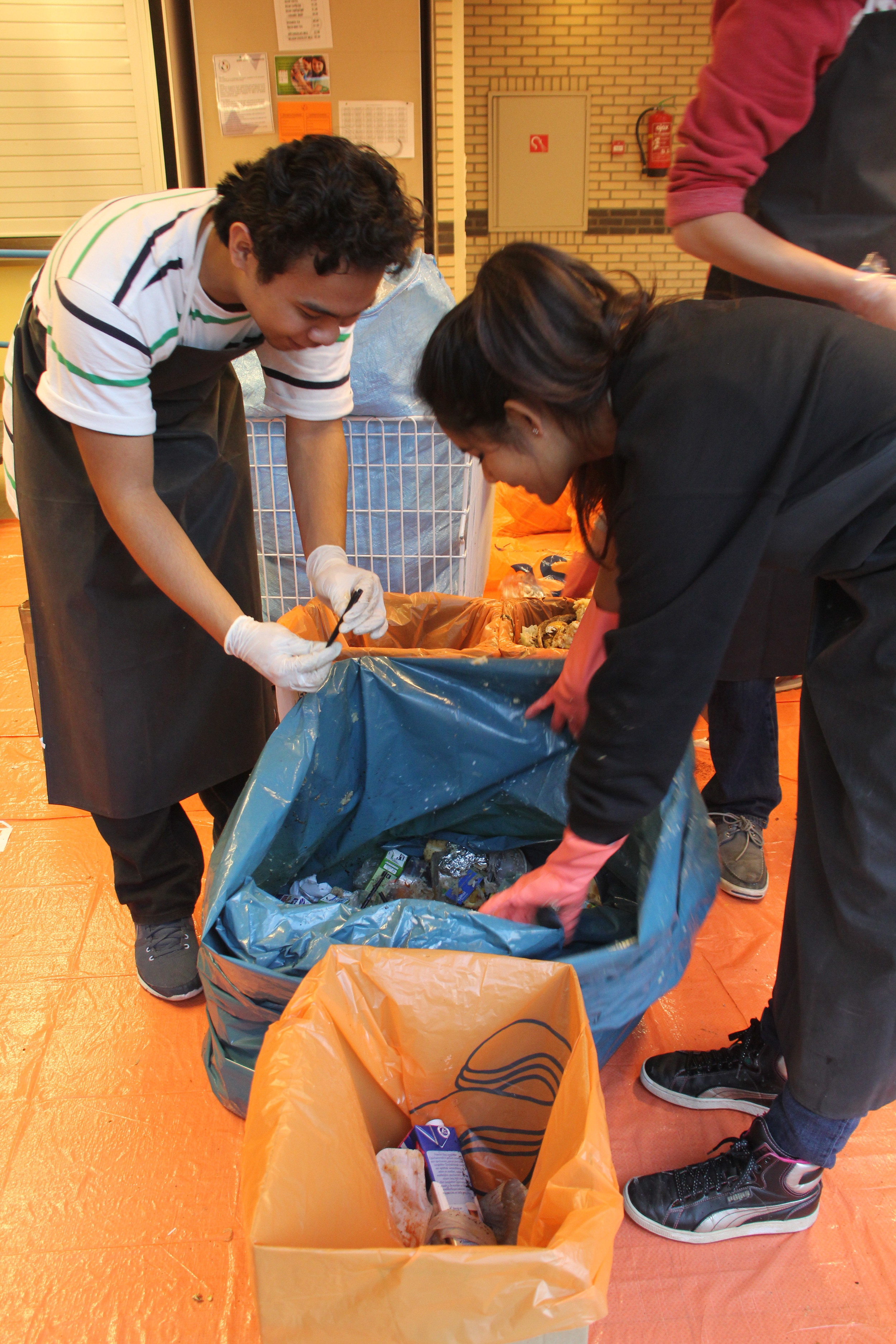Garbage Audit #2
Once again the space is scheduled and the supplies are stacked. Pupils have planned and prepared for this proceeding.
We meet at 15:15 in my room and the plan is put into motion. The students split up into groups collecting trash, spreading tarps, and organizing bins.
Finally it is time to don the gloves, open the bags and start sorting! The goal is to compare the results to last year’s audit and see if any improvements can be observed based on the implementation of the team’s proposals. Additionally, the students are focusing this year on the organic waste to determine how much of it is compostable
The most unusual discoveries? How about an entire briefcase with two phones in it? The bag of perfectly usable clothes? The intact mugs? The functioning umbrella?
The students are having fun. The sorted contents are analyzed. Data is recorded. Ideas for the proposals are formulating. They are disgusted, especially as they tackle the cafeteria waste, but they are still laughing. It’s 18:20 and we are nearly done. We clean up and store a huge container to be wheeled off to the recycling station in the morning.
The next day data analysis begins. The data from last year is retrieved and comparisons begin to form. Have we made a change? An initial look suggests that there has been change! However, we’re still waiting for the final results.
One thing is for sure: there is satisfaction for the involved students. They feel ownership in the environmental status of their school. They are absolutely intrigued with the outcomes of the audit. They are eager to determine how to further reduce waste and energy usage at the school. The act of physically being involved makes the concept of Going Green so much more real. It spawns ideas. It inspires.
Oh yes, and it’s messy! Allow the students (and yourself) to get dirty. It will provide new inspiration and further ideas for service learning!
